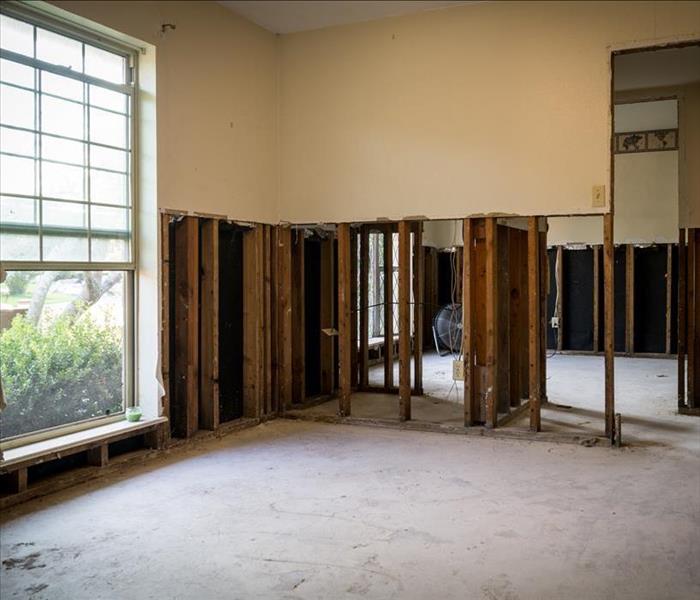Assessing Structural Damage After a Severe Storm
4/3/2024 (Permalink)
When a severe storm strikes, it can cause significant structural damage to homes and buildings. Assessing and addressing this damage promptly is crucial to prevent further issues and ensure the safety of occupants. In this blog, we will explore how structural damage is assessed after a severe storm, providing valuable insights to help homeowners navigate the process effectively.
Safety First
Before assessing any damage, prioritize safety. Ensure that the storm has passed, and it is safe to enter the premises. Watch out for potential hazards such as downed power lines, unstable structures, or standing water. If there are any immediate concerns about the stability of the building, evacuate immediately and seek professional assistance.
Exterior Assessment
Begin by conducting an exterior assessment of your property. Look for visible signs of damage, including:
- Roof: Check for missing or damaged shingles, dented or bent metal panels, or signs of water pooling. Damaged roofs can lead to water intrusion and should be addressed promptly.
- Walls: Inspect the walls for cracks, bulges, or leaning. Pay close attention to areas around windows and doors, as they are vulnerable to wind and water damage.
- Foundation: Look for cracks, shifting, or sinking of the foundation. Changes in the foundation can affect the integrity of the entire structure and should be addressed by a professional.
- Windows and Doors: Check for broken windows, damaged frames, or doors that no longer close properly. These issues can compromise the security of the home and contribute to water intrusion.
Interior Assessment
Once the external assessment is complete and deemed safe, proceed to inspect the interior of the building. Look for the following signs of structural damage:
- Cracks on Walls and Ceilings: Assess for new or widening cracks on walls and ceilings, which may indicate shifting or settling of the structure. Take note of the size, direction, and location of the cracks to provide useful information to a structural engineer or restoration professional.
- Sagging or Uneven Floors: Check for any noticeable dips, slopes, or bouncing in the floors. These issues could indicate damage to the underlying structure or compromised support beams.
- Leaks and Water Damage: Look for signs of water damage, such as stains, discoloration, or moisture on walls, ceilings, and floors. Water intrusion can weaken structures and contribute to mold growth if not addressed promptly.
Engage Professionals
For a comprehensive assessment of structural storm damage, it is essential to engage professionals. A qualified structural engineer or a reputable restoration company like SERVPRO® can assess the severity of the damage and provide expert guidance on the necessary repairs.
- Structural Engineers: Consult with a structural engineer to evaluate the extent of the damage and provide a detailed assessment. They can determine if the building is structurally sound and prescribe appropriate repairs or reinforcements.
- Restoration Professionals: A professional restoration company like SERVPRO can offer expertise in addressing water damage, mold remediation, and structural repairs. Their skilled technicians can conduct a thorough evaluation of the damage and execute the necessary restoration procedures to ensure your home is safe and habitable.
Remember to document all the damage with photographs and detailed notes, as this information will be valuable for insurance claims and the restoration process. Be diligent in your assessments and consult the relevant professionals to ensure comprehensive and reliable evaluations of the structural damage.
Assessing structural damage after a severe storm requires a methodical approach and professional expertise. Prioritize safety, conduct a thorough evaluation of the exterior and interior, and engage reputable professionals for their guidance. By addressing structural storm damage promptly and properly, you can protect your property and restore it to its pre-storm condition with the help of trusted experts like SERVPRO.




 24/7 Emergency Service
24/7 Emergency Service